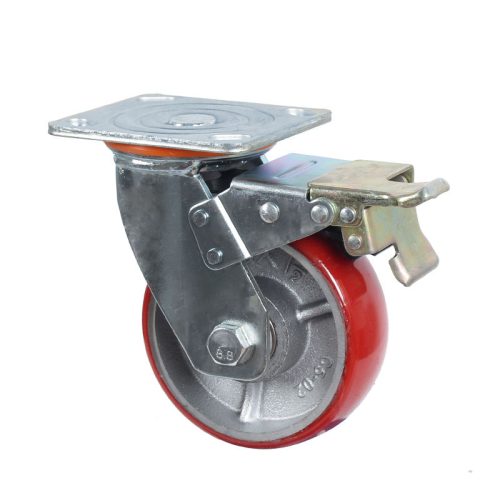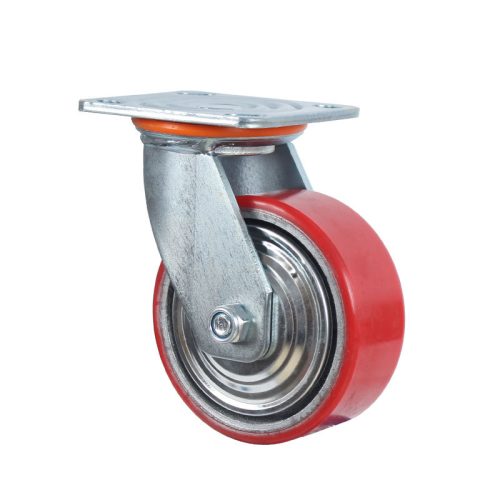When it comes to choosing casters for your equipment or projects, you often encounter the dilemma of selecting between rigid casters and swivel casters. Each type offers distinct advantages and is suited to specific applications. In this article, we’ll explore the differences between rigid casters and swivel casters to help you determine which is best for your particular needs.
1. Rigid Casters
Pros:
- Stability: Rigid casters provide exceptional stability because they only move in a straight line. They are ideal for applications where keeping the equipment on a fixed course is crucial.
- Weight Capacity: Rigid casters often have a higher weight capacity compared to swivel casters. This makes them suitable for heavy-duty applications and the transportation of substantial loads.
- Durability: Rigid casters are known for their robust and durable construction, making them reliable in challenging environments.
Cons:
- Limited Maneuverability: Rigid casters do not swivel, which can make it challenging to change direction. If you require precise turns, rigid casters may not be the best choice.
- Increased Wear on Floors: The fixed direction of rigid casters can lead to increased wear and tear on floors, particularly in applications where frequent turning is necessary.
2. Swivel Casters
Pros:
- Unlimited Maneuverability: Swivel casters can rotate 360 degrees, providing unparalleled maneuverability. They excel in applications that demand tight turns and intricate navigation.
- Reduced Floor Wear: Swivel casters distribute the load evenly while turning, reducing the wear on floors. This makes them suitable for use on delicate surfaces.
- Versatility: Swivel casters come in a variety of styles, including those with locking mechanisms or brakes, enhancing their adaptability to different applications.
Cons:
- Reduced Stability: Swivel casters are less stable than rigid casters due to their ability to rotate in any direction. This makes them less suitable for applications where stability is paramount.
- Lower Weight Capacity: Swivel casters typically have a lower weight capacity compared to rigid casters. They may not be suitable for heavy-duty applications.
Choosing the Right Caster for Your Needs
The choice between rigid and swivel casters largely depends on the specific requirements of your project or equipment. Here are some considerations to guide your decision:
- Direction and Maneuverability: If you need to move in a straight line and prioritize stability, rigid casters are the better choice. Swivel casters are the go-to option when you require agile and precise maneuverability.
- Floor Type: Consider the type of flooring you’ll be working on. Swivel casters are gentler on delicate floors, while rigid casters can cause more wear on them.
- Weight Capacity: Assess the load you’ll be transporting. For heavy-duty applications, rigid casters are more suitable, while swivel casters are ideal for lighter loads.
- Locking Mechanisms: If you need the flexibility of both types, some casters come with swivel locks. These allow you to switch between swiveling and rigid modes as needed.
Ultimately, the choice between rigid and swivel casters comes down to the specific demands of your project. It’s often beneficial to use a combination of both types to balance stability and maneuverability. By carefully considering your needs and the pros and cons of each type, you can make an informed decision that ensures optimal performance for your application.


